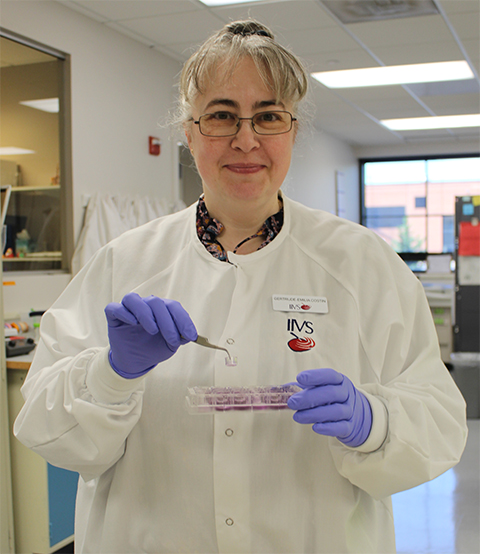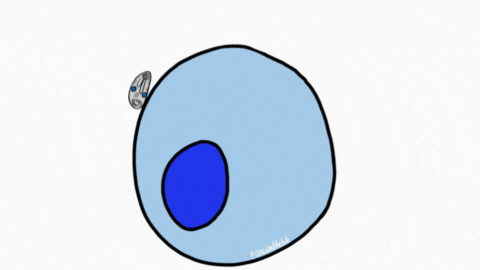The 2.5 points of no return in my scientific career
“Once you leave academia for industry, you will never return — or want to return.”
You may be familiar with this cliché if you are a scientist open to exploring all your career options. You may have struggled internally at one point in your scientific journey and received advice from either side of the aisle.
I did, and I believe this is a continuous dilemma as we face changes, self-inflicted or imposed by others. Multiple points in a career may be perceived as being of no return. Sometimes, the demarcation lines are clear, and other times they’re extremely blurry.

I am an academic and biochemist by training and at heart; I went through cell and molecular biology and have worked in the last 17 years as a toxicologist in industry. I’ve faced many inflexion points during my career, but I considered none of those transitions among similar scientific fields to be of no return.
Several crossroads, however, were quite impactful, and I think they are worth sharing with my fellow scientists. Some aspects of my career challenges may be unique to scientists working in industry or crossing borders between worlds.
Point 1: The pace
I interview many young academic scientists who take the pace in industry rather lightly. They say, “Yes, I’ve heard of this fast pace in industry, but academia is no different.”
I smile and say to myself, “Oh, you better believe it — it is very much different.”
There’s no point in debating with the interviewee. The solution is to hire them so they can experience it themselves; some love how addictive it is, and some run away at the first opportunity.
As a young scientist, I experienced working in industry as a new language to learn. For some time after being hired, I listened and understood nothing; more than once, this made me question my choices. Gradually, some of my colleagues translated the industry terms for me, and they made sense as I learned more about advertising, marketing, sales, competition and intellectual property. Then the never-ending marathon started, be it for new ideas, results, launches or revenue. The infectious rhythm in industry cannot be replicated or paralleled.
In industry, I had the opportunity to understand applied science and see how ideas get to the market, some faster than others depending on the type of product being launched. For example, the continuous rush to make personal care and cosmetic products available to the end user is enabled by strong collaboration between the scientists and the marketing teams that constantly take the pulse of the consumers and adapt product lines accordingly.
Once industry got into me, the politics specific to academia and the writing of grants seemed to exist in a distant past, and my desire to return to them became less intense.
Point 2: The rules
In academic or industry labs that are not governed by good laboratory practices, or GLPs, researchers have some flexibility in how they document, check and keep experimental records. However, GLPs require that every entry is initialed and dated, every error is addressed following set rules, often by a deviation report, and every change to an experimental protocol is made by amendment.
Once this GLP microbe got into my system, it never went away, and it serves as a great tool in any career path. I know some scientists who have left a GLP environment for one with looser regulations, and they could not stand it. They returned to the strict environment and preferred dealing with regulated records and audits.
I would find it very difficult now to function in a laboratory-based environment without the strictness of GLPs, and I’d make an effort to implement them where they don’t exist. For me, this is a point of no return; I feel insecure knowing what it takes to reconstruct an experiment and how nearly impossible that could be without records following GLPs.

Point 0.5: The promotion
I’ve heard that another point of no return can be the moment a scientist leaves the trenches of the operations side (fast-paced activities specific to study directors, senior scientists, principal investigators and the like) and steps into the management realm. Lately, I’ve started to understand how this could indeed be another point of no return.
This one, however, is like riding a bicycle: If asked to suddenly step back into the lab or be responsible for a study, a scientist will find their way to a pipette and quickly remember how to follow a protocol, especially after a refresher training course.
The other day I had to do just that when I provided training on a method that I had not performed in the lab in nearly two years. One step required precise delivery of 1 microliter of a reagent in 0.2-milliliter PCR strip tubes using a repeater pipette, without contamination between samples. It takes patience, repetition and stable arms and hands to do that. Before training someone else, I had to remember all the tips and tricks to execute this step without error. It didn’t take much effort — all the memories rushed back, connecting the neurons, eyes and hands, until it seemed I had done it just yesterday.
I’ve been a scientist for 26 years, and during this time I transitioned from spending nearly 100% of my time conducting experiments, up to and a bit beyond the postdoctoral years, to much less currently. Of these 26 years, 17 have been dedicated to designing studies and being in charge as study director, removing me ever so slightly from the lab bench action. Of these 17 years, eight have been in managerial positions, which distanced me even further from the lab activities.
While I’ve slowly started spending more and more time at my desk and in countless meetings, I don’t lose any opportunity to step into the lab, be it for training, conducting small experiments or observing various steps of assays. By keeping a relatively busy schedule as study director, I remain connected to the thrill of lab work, and this is my way of fighting against a complete departure from the lab.
As a manager, I find it nearly impossible to lead anyone in operations if I don’t know what they go through every day, hence my resistance against leaving that world behind. This is the very reason why this point is only 0.5 of no return for me and for now. My journey continues, for I am a traveler between both worlds.
What about you? What are the points of no return in your scientific world?
Enjoy reading ASBMB Today?
Become a member to receive the print edition four times a year and the digital edition monthly.
Learn moreFeatured jobs
from the ASBMB career center
Get the latest from ASBMB Today
Enter your email address, and we’ll send you a weekly email with recent articles, interviews and more.
Latest in Opinions
Opinions highlights or most popular articles

Sketching, scribbling and scicomm
Graduate student Ari Paiz describes how her love of science and art blend to make her an effective science communicator.

Embrace your neurodivergence and flourish in college
This guide offers practical advice on setting yourself up for success — learn how to leverage campus resources, work with professors and embrace your strengths.

Survival tools for a neurodivergent brain in academia
Working in academia is hard, and being neurodivergent makes it harder. Here are a few tools that may help, from a Ph.D. student with ADHD.

Hidden strengths of an autistic scientist
Navigating the world of scientific research as an autistic scientist comes with unique challenges —microaggressions, communication hurdles and the constant pressure to conform to social norms, postbaccalaureate student Taylor Stolberg writes.

Black excellence in biotech: Shaping the future of an industry
This Black History Month, we highlight the impact of DEI initiatives, trailblazing scientists and industry leaders working to create a more inclusive and scientific community. Discover how you can be part of the movement.

Attend ASBMB’s career and education fair
Attending the ASBMB career and education fair is a great way to explore new opportunities, make valuable connections and gain insights into potential career paths.

